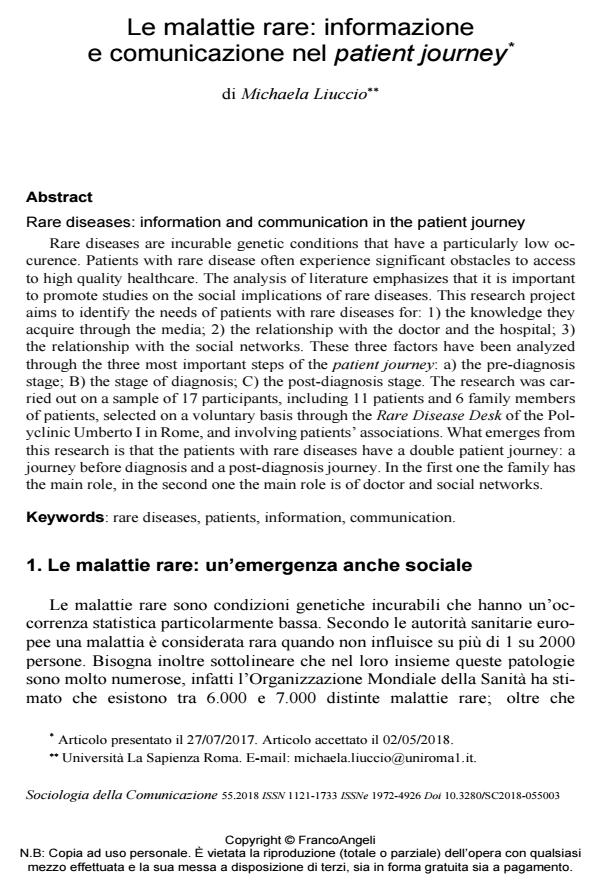Rare diseases: information and communication in the patient journey
Journal title SOCIOLOGIA DELLA COMUNICAZIONE
Author/s Michaela Liuccio
Publishing Year 2018 Issue 2018/55
Language Italian Pages 18 P. 30-47 File size 239 KB
DOI 10.3280/SC2018-055003
DOI is like a bar code for intellectual property: to have more infomation
click here
Below, you can see the article first page
If you want to buy this article in PDF format, you can do it, following the instructions to buy download credits

FrancoAngeli is member of Publishers International Linking Association, Inc (PILA), a not-for-profit association which run the CrossRef service enabling links to and from online scholarly content.
Rare diseases are incurable genetic conditions that have a particularly low oc-curence. Patients with rare disease often experience significant obstacles to access to high quality healthcare. The analysis of literature emphasizes that it is important to promote studies on the social implications of rare diseases. This research project aims to identify the needs of patients with rare diseases for: 1) the knowledge they acquire through the media; 2) the relationship with the doctor and the hospital; 3) the relationship with the social networks. These three factors have been analyzed through the three most important steps of the patient journey: a) the pre-diagnosis stage; B) the stage of diagnosis; C) the post-diagnosis stage. The research was carried out on a sample of 17 participants, including 11 patients and 6 family members of patients, selected on a voluntary basis through the Rare Disease Desk of the Polyclinic Umberto I in Rome, and involving patients’ associations. What emerges from this research is that the patients with rare diseases have a double patient journey: a journey before diagnosis and a post-diagnosis journey. In the first one the family has the main role, in the second one the main role is of doctor and social networks.
Keywords: Rare diseases, patients, information, communication
- Research Anthology on Improving Health Literacy Through Patient Communication and Mass Media Michaela Liuccio, pp.218 (ISBN:9781668424148)
- Communicating Rare Diseases and Disorders in the Digital Age Michaela Liuccio, pp.87 (ISBN:9781799820888)
Michaela Liuccio, Le malattie rare: informazione e comunicazione nel patient journey in "SOCIOLOGIA DELLA COMUNICAZIONE " 55/2018, pp 30-47, DOI: 10.3280/SC2018-055003